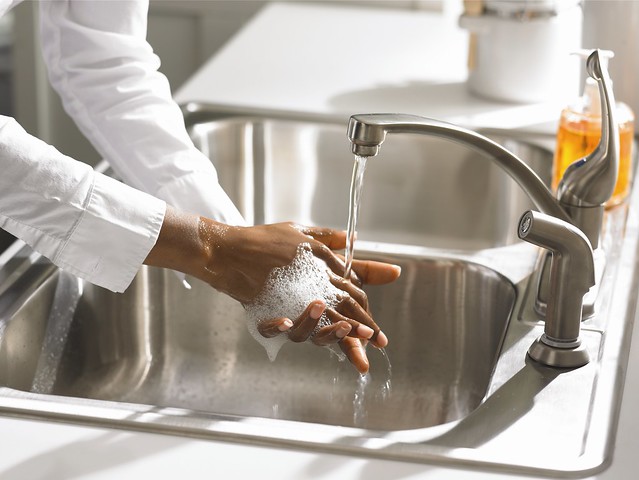
“Clean vs. dirty” is a concept that seems easy enough to understand. You know your jeans are dirty when they get grass stains on them, because you can easily see the stains. Seeing bacteria on your food is a different story. All foodborne bacteria are microscopic and can’t be seen with the naked eye, making it difficult to know if your foods have been cross-contaminated. Bacteria may come into contact with our foods from contaminated cooking equipment, utensils and even our hands. According to the 2016 FDA Food Safety Survey (PDF, 530 KB) Americans are doing well to prevent cross contamination from some common sources, but not all.
For example, 85 percent of respondents in the survey said they wash their hands after handling raw meat. Ninety percent of respondents said they wash their cutting board, or get a different one, after the cutting board has touched raw meats. Eighty-one percent of participants said they use a different plate than the one that held raw meats to carry cooked items from the grill. But what else might we touch that can transfer harmful bacteria to our foods and make us sick?
Don’t Let Your Cell Phone Take ‘Viral’ to a New Level
Do you ever use your cell phone while preparing or eating food? Phones go everywhere with us now including the ballpark, our gardens, the bathroom… and out to the grill. During these travels, our phones inevitably pick up bacteria. Findings from the FDA survey indicated that 40 percent of respondents who use a telephone, smartphone or laptop while cooking, did not wash their hands and continued to cook after touching their device.
Washing hands after touching any potentially contaminated surface is an easy way to prevent illness. Always wash your hands for 20 seconds with soap and warm water. Focus on scrubbing your palms, between your fingers and underneath your fingertips and then rinse. Our hands are great tools for creating healthy and delicious meals and we can do our part to make sure they don’t transfer bacteria onto our foods.
Veggies Need a Bath, Too
Other items that people may not clean, but should, are fruits and vegetables. Bacteria can be transferred from the outside of the fruit or vegetable during peeling or slicing, so even if you plan to peel or slice your fruit and vegetables, wash them beforehand with cold running water. If the fruit or vegetable has a firm surface, such as on apples or potatoes, the surface can be scrubbed gently with a brush.
If you have a question about meat, poultry or egg products, call the USDA Meat and Poultry Hotline by calling 1-888-MPHotline (1-888-674-6854) or email or chat via in English or Spanish via Ask Karen or Pregúntele a Karen.


